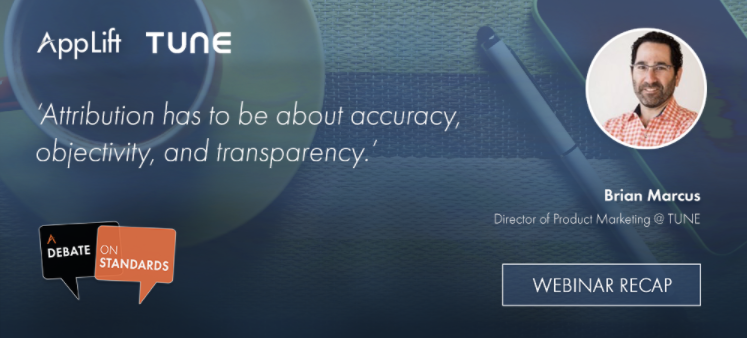 The cornerstone of modern-day performance marketing is measurement. For mobile marketers, measuring the effectiveness of their campaigns is critical in helping to connect the dots and gain insights into the customer journey. When marketers have a deeper understanding of user events such as app install or in-app behavior, they can successfully optimize their advertising efforts and spend more efficiently. However, the lack of standards in mobile attribution can result in several issues.
The cornerstone of modern-day performance marketing is measurement. For mobile marketers, measuring the effectiveness of their campaigns is critical in helping to connect the dots and gain insights into the customer journey. When marketers have a deeper understanding of user events such as app install or in-app behavior, they can successfully optimize their advertising efforts and spend more efficiently. However, the lack of standards in mobile attribution can result in several issues.
As part of AppLift’s A Debate on Standards webinar series, Brian Marcus, TUNE’s Director of Product Marketing, was the most recent featured guest interviewed by AppLift CRO Maor Sadra. The webinar, entitled Is Performance Attribution Flawed By Nature?, looked at mobile measurement and the impact a lack of standards has on the industry. This Q&A session examined the performance attribution ecosystem and the gaps within it.
Here’s a preview of what was discussed:
Q: How has attribution evolved in a cookie-less environment?
Brian: In many ways, not much has changed; there are still winners and losers when it comes to who gets credit for the action. It’s still about tying advertising back to the source, whether you are in the catalog, digital, or now a device world.
One of the differences in mobile is that advertisers don’t own the shopping cart page or the ability to put their image tag on that page or the ability to optimize it. With the addition of devices, channels, and location, the customer journey is completely different. The paradigm of being able to challenge one channel versus another is becoming more and more confusing. In fact, it’s very quickly becoming incumbent upon us to look through a people-centric lens.
Lastly, measurements, incentives, and interfaces used to be connected. Now, everything is “unbundled,” which makes getting cost and revenue information and being able to measure here and there has made it difficult to tie everything together and create a connected world. We are still early in the days of pulling it all together.
Q: Is consolidation on analytics and separation of media the answer?
Brian: It’s important to have a neutral and unbiased source of truth. It’s best when people play different roles but stay connected. It’s important to have an infrastructure you can trust, regardless of the partners you work with. TUNE aspires to be that — a neutral party that can get super granular and clean data so marketers can make good decisions.
Q: What are the problems the industry is currently facing?
Brian: Fragmentation across device, channel, and location are where we are at in the ecosystem today. It’s a challenge to tie the right measurements to the right actions and outcomes with the right incentives. Fragmentation across device, channel, and location has to come together and that’s one of the problems. Standardization would help with being able to know as a customer crosses from channel and device for appropriate attribution.
Another problem is opacity. As I think about supply and demand these days, there is a lot of opacity in the ability for both sides to see each other truthfully. That’s leading to issues with fraud, which may be the biggest problem that advertisers are facing. That’s where transparency is the key. For networks, publishers, and advertisers to see the same sets of information opens up that world and makes it better. Having standards in place and systems connected ensures that fraud can be reported on a granular level and marketers can know where the bad actors are playing.
The other big challenge is about the customer journey. Marketers need to know where good traffic is coming from and how the traffic plays out in the lifetime of a customer. With lack of standards, it’s hard to measure everything back to the source. It’s hard to re-engage and know you are working with the right set of publishers or networks. Being able to standardize the best we can will help marketers ingest the right data, normalize that data, and then be able to look very cleanly across a person or segment of people to make better decisions.
Other topics discussed in this session include self-attributing media vendors, multi-touch attribution models, and where marketers would be without attribution. You can view the full webinar below, or visit the AppLift blog to discover more about the obstacles facing today’s mobile marketers.
Author
Becky is the Senior Content Marketing Manager at TUNE. Before TUNE, she handled content strategy and marketing communications at several tech startups in the Bay Area. Becky received her bachelor's degree in English from Wake Forest University. After a decade in San Francisco and Seattle, she has returned home to Charleston, SC, where you can find her strolling through Hampton Park with her pup and enjoying the simple things between adventures with friends and family.



Leave a Reply
You must be logged in to post a comment.